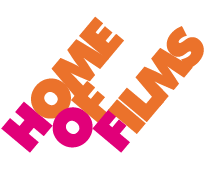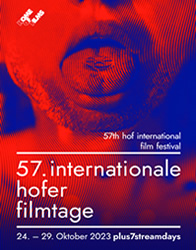The current format
In 2006, the festival celebrated its 40th edition. On the occasion of this anniversary, the festival looked back on itself in the retrospective and presented 17 highlights from earlier years, including Werner Herzog’s Kaspar Hauser-adaptation THE ENIGMA OF KASPAR HAUSER: EVERY MAN FOR HIMSELF AND GOD AGAINST ALL (JEDER FÜR SICH UND GOTT GEGEN ALLE). That year’s program trumped with women with such titles as ZWEI FRAUEN, THREE MOTHERS and VIER TÖCHTER (“Four daughters”). But the men held their own: HEAVYWEIGHTS (SCHWERE JUNGS) was the opening film, which this time – and in the future as a rule – screened not on Wednesday, but on Tuesday, and two times at that. First in the Scala, then half an hour later at Central. The festival, which only lasted for half an afternoon in its first year, then two and a half days in the second year, was now spread out across six days. With that, however, as Badewitz assured, the endpoint had been reached.
One more festival day of course means more screenings and more seats. And more films. There were 100 in that year, including 67 feature-length films and documentaries. Among the German entries, Chris Kraus’ FOUR MINUTES (VIER MINUTEN) impressed audiences, with the magnificent Hannah Herzsprung and Hof local Sven Pippig. Bavarian Television broadcasted a 30-minute portrait of Heinz Badewitz at the beginning of the festival: DER HEINZ VOM FILM, which presented the festival director in a background story at his hairdresser’s, restoring his famous Beatle haircut. In the meantime now Europe’s most senior festival director, he gave insight into himself, “One has to stay young in the mind.” And,
“As long as I can hold a print, it’s not over.”
In October 2007, the festival entered into its fifth decade. The number of German films had now reached an almost unbelieveable three dozen, including 14 documentaries – about prominent figures such as Josef Bierbichler and Mike Figgis, but also about two women who were very special in Rosa von Praunheim’s life: MEINE MÜTTER (TWO MOTHERS).
With the TV film BELLA BLOCK – REISE NACH CHINA, Chris Kraus returned once again, Maria Schrader presented LIEBESLEBEN (LOVELIFE), the Polish documentary filmmaker Stanislaw Mucha, who lived for quite a while in Hof, presented his first feature: HOPE. The retrospective was comprised of eight works by the “Chinese American” Wayne Wang, including such internationally sucessful cult classics as SMOKE and BLUE IN THE FACE.
The press coverage of the 41st edition of the festival was mixed. The Süddeutsche Zeitung reprimanded the “overabundance of television productions which only seemed to simmer, but never boil.” In contrast, Michael Althen of the FAZ maintained that precisely that was the attraction of Hof, the already unclear dividing line between cinema and television productions being lifted for a week:
“A good film is still a good film, regardless as to whether it was made for television or the cinema.”
In 2008, the German program put forward some big names. The opening film, IM WINTER EIN JAHR (A YEAR AGO IN WINTER), was by Caroline Link, Christian Petzold showed JERICHOW, Praunheim was there with DER ROSE RIESE (“The pink giant”), Hans-Christian Blumenberg brought WARTEN AUF ANGELINA (“Waiting for Angelina”), Werner Schroeter came with NUIT DE CHIEN, Klaus Lemke with DANCING WITH DEVILS, and among the documentaries we saw Achternbusch and Schlingensief – not as directors but as subjects. Badewitz spoke of “a new seriousness, which reflects the spirit of the times,” and Praunheim, who received the Film Award of the City of Hof that year, emphasised that Hof was an important place – for the industry, producers, actors and directors.


